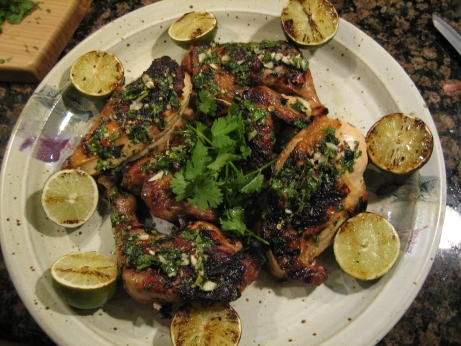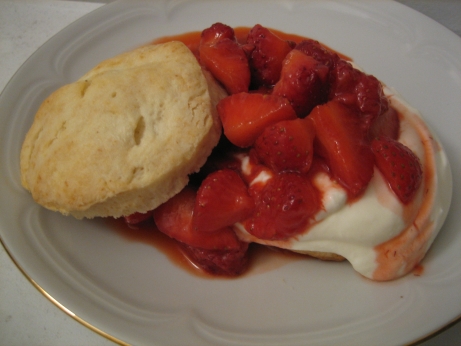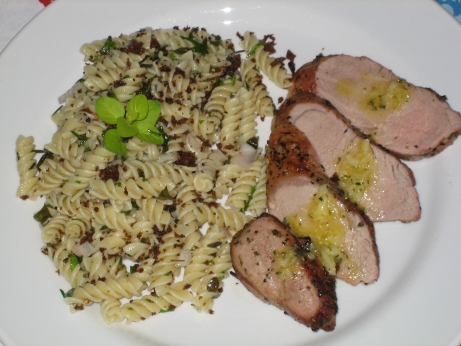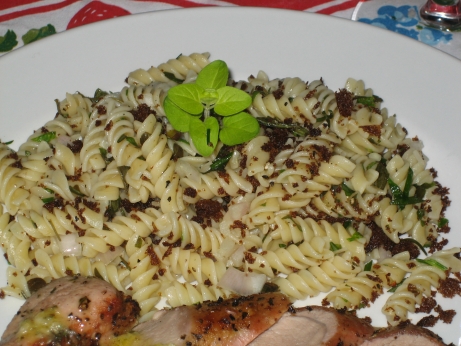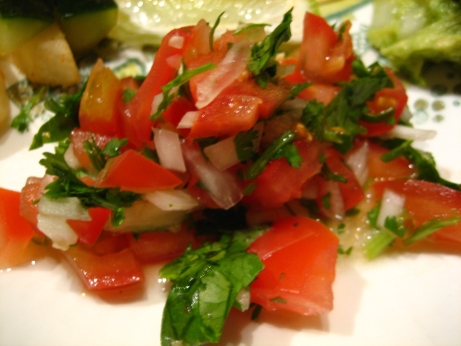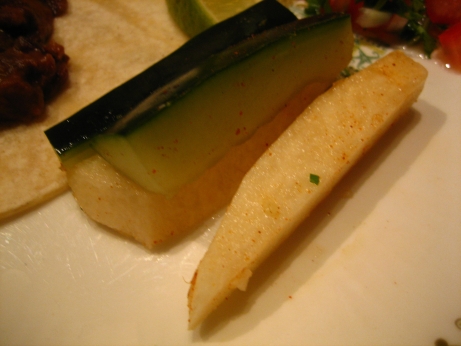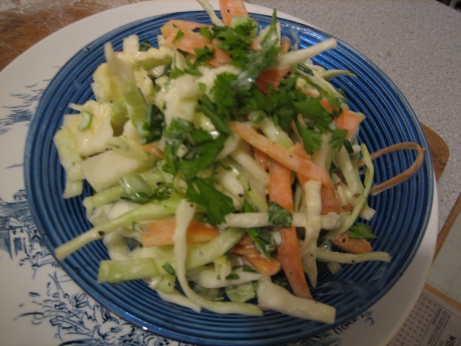The blurb before the recipe says that the secret to perfect grilled chicken is to brine it then toss it in a vinaigrette once it’s done. I’ve never really had a problem with my non-brined, non-dressed grilled chicken, but this version does have its charms. Brining makes things taste good by saturating them with salt, sugar, and extra liquid. They remain moist and get the flavour enhancing goodness of salt all the way through the meat. Unfortunately that means brined dishes are really salty. If it’s done right it doesn’t taste all that salty at the time, but I inevitably wake up parched in the night after a dish like this.
We made this dish for some friends we were visiting. They live near San Francisco, which means I got to have my first Whole Foods and Trader Joe’s experiences. Other than amazingly priced wine I didn’t really get what the big deal about TJs was, Whole Foods really was worth they hype though. On the one hand it’s just like every other megalomart, only expensive. On the other good quality organic stuff was everywhere. We just don’t have an equivalent in Montreal, and one opening here would be a big deal for me. We’re taking a mini-break and visiting different friends in Brooklyn this weekend, I’m anxious to get back to a Whole Foods and do a little exploring. Incidentally that means I’ll be away tomorrow through Sunday, so no updates ’till Monday.
I picked up the chicken and herbs for this dish at Whole Foods, and most of the rest of the ingredients for dinner from a cute farmer’s market in Palo Alto. I brined the chicken for three hours instead of the recommended six. I also misread the recipe and added a bunch of lime juice to the brining liquid, it didn’t seem to affect anything, so no harm done. I then made a Thai style vinaigrette of lime juice, garlic, cilantro, mint, red pepper flakes, salt, and oil. I left out the two tablespoons of fish sauce, which the recipe promises won’t make the dish taste in the least fishy. My dining companion’s superpower is detecting fermented fish at even the lowest concentrations, so I decided not to include it.
The Book offers extravagantly detailed instructions on how to grill the chicken. It comes down to searing it for a few minutes, then moving it to indirect heat and letting it cook slowly until it’s done. The breasts will take longer than the leg pieces. Once the chicken is done you remove it and toss it in the vinaigrette. You then put halved limes cut side down over the hottest part of the grill for a few minutes to develop some grill lines. I’m not sure that the grilling of the limes served any purpose, but they did look cool. You can imagine that heating them makes them easier to juice, but I’m pretty sure it’s just a gimmick.
This method did produce a very fine grilled chicken, I’m not sure it was worth the extra effort though. The vinaigrette worked wonderfully, and I’d be happy to try it again as well as the alternate Mediterranean vinaigrette it gives as an option. The brining enhanced the flavour of the chicken, but it really was quite salty. I have a hard time deciding how much the brine actually improved the chicken, because I rarely buy organic, which is naturally more flavourful. I was a very poor scientist to vary both my ingredients and methods at the same time, I’ll need to do some control experiments to figure this out.
I’ve never found grilling chicken to be all that error prone or difficult, so I think I’ll skip the brining step in future. The vinaigrette added nice acidity, and aromatics to the chicken. It was simple to prepare and fragrant, a definite keeper. I liked serving grilled limes with the chicken, they were fun, looked cool, and I liked being given the option of adding as much or as little acidity as I’d like. This was a fairly good grilled chicken recipe, but I don’t think I’ll give up my home-brewed technique.
